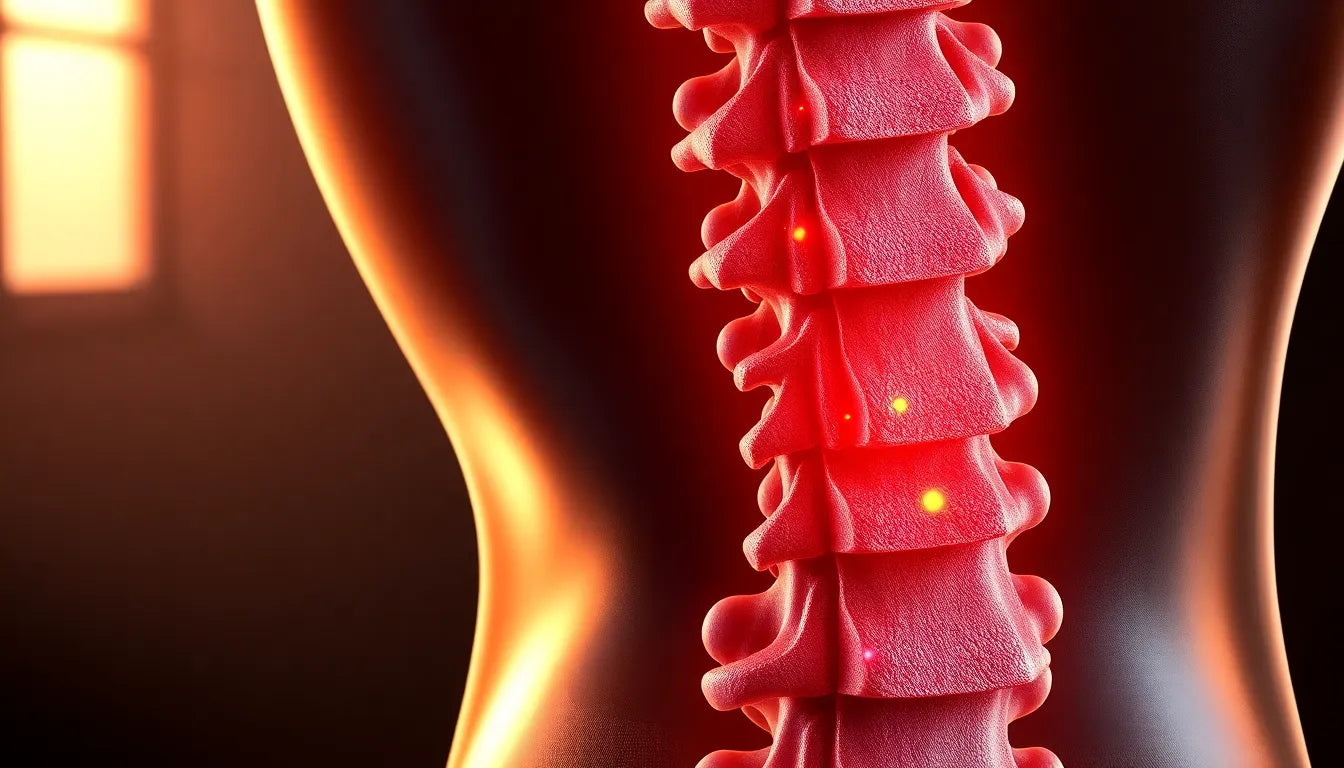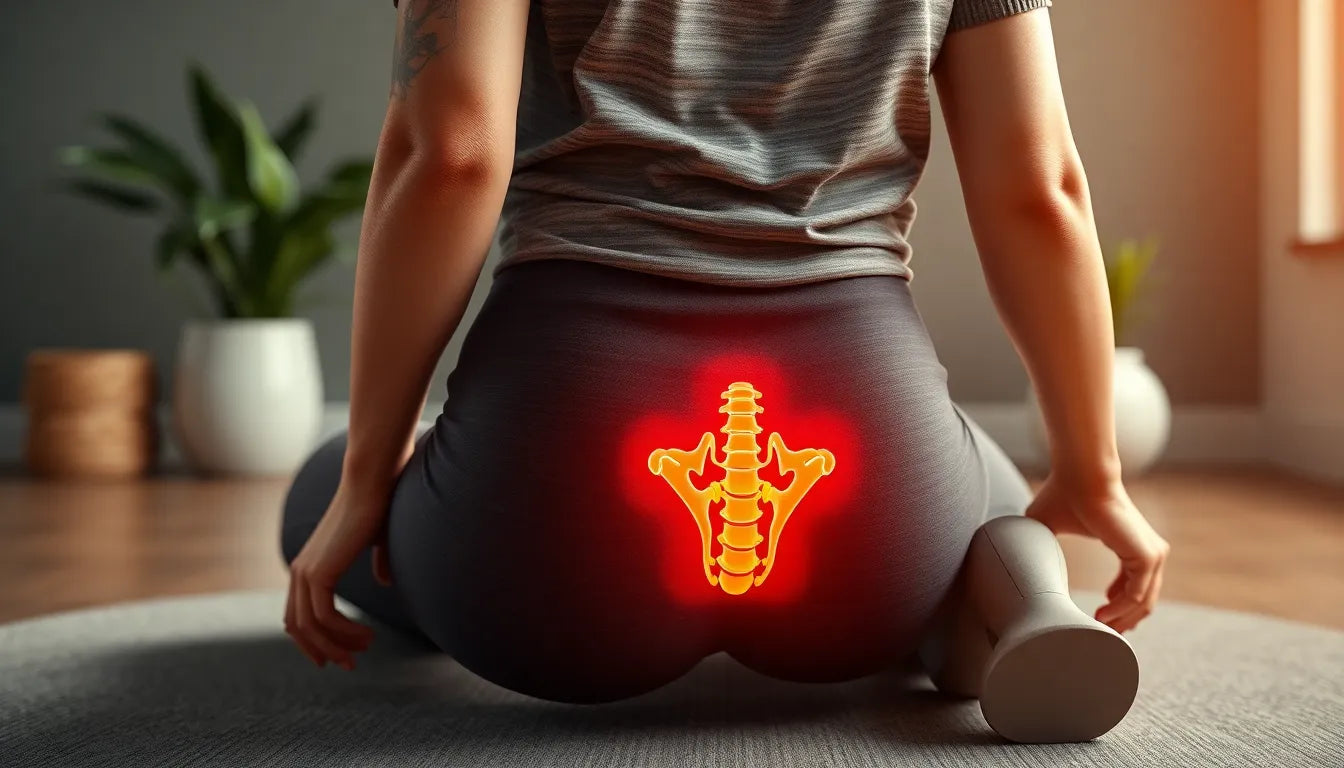Back pain is a common ailment that affects millions of people worldwide, disrupting daily activities and diminishing quality of life. While many experience occasional discomfort, it can be challenging to discern whether this pain is simply a result of strain or something more serious, like a herniated disc. Understanding the nuances of back pain is crucial in addressing it effectively. This post aims to guide you in identifying potential signs of a herniated disc, helping you take the necessary steps towards diagnosis and treatment.
What is a herniated disc?
A herniated disc, often referred to as a slipped or ruptured disc, occurs when the soft center of a spinal disc pushes through a crack in the tougher exterior casing. This condition can irritate nearby nerves, leading to pain, numbness, or weakness in an arm or leg. The most common causes include age-related wear and tear, known as disc degeneration, or injury from lifting heavy objects improperly. Understanding what a herniated disc entails sets the stage for a deeper exploration of its symptoms and how it can be accurately diagnosed.
As we delve deeper into this topic, it's essential to recognize that not all back pain is indicative of a herniated disc. However, familiarizing yourself with the signs and seeking professional evaluation when necessary can lead to more effective management and relief. Stay tuned as we explore the symptoms, diagnostic methods, and importance of medical attention in the subsequent sections of this post.
Recognizing the symptoms of a herniated disc
Identifying a herniated disc early can significantly impact the course of treatment and recovery. While back pain is a common symptom, it's the specific nature and accompanying signs that can indicate a herniated disc. One of the most prevalent symptoms is low back pain, which can range from a dull ache to sharp, debilitating discomfort. Additionally, many individuals experience sciatica, characterized by pain that radiates from the lower back down the leg, often reaching the foot. This occurs when the herniated disc presses on the sciatic nerve, causing shooting pain, numbness, or tingling sensations.
Another common symptom is numbness or tingling in the leg and/or foot, which can be persistent or intermittent. This symptom results from nerve compression and may accompany muscle weakness, making it difficult to perform everyday activities like walking or lifting objects. In some cases, if the herniation occurs in the cervical spine, individuals may experience pain in the shoulder or arm, further complicating the diagnosis.
While these are the more common indicators, less frequent symptoms can also arise. Severe cases may lead to cauda equina syndrome, a serious condition involving loss of bladder or bowel control. This requires immediate medical attention as it can lead to permanent damage if not addressed promptly.
Diagnostic methods for herniated disc
Accurate diagnosis of a herniated disc is crucial to determine the appropriate treatment plan. The process typically begins with a thorough medical history and physical examination. During this assessment, doctors evaluate the patient’s symptoms, lifestyle, and any recent injuries that may have contributed to the condition. A key component of the physical exam is the straight leg raise (SLR) test, which helps identify the presence of sciatica.
A neurological examination is also essential, focusing on reflexes, muscle strength, and sensory response. This helps determine the extent of nerve involvement and guides further diagnostic steps. Imaging tests, particularly Magnetic Resonance Imaging (MRI), play a pivotal role in confirming the diagnosis. An MRI provides detailed images of the spinal discs and nerves, allowing for precise identification of the herniated disc's location and severity. In some cases, CT scans and X-rays may be used to rule out other conditions or assess the structure of the spine.
The importance of seeking medical attention
While some back pain may resolve on its own, persistent or worsening symptoms of a herniated disc warrant professional evaluation. Ignoring these signs can lead to increased pain and potential complications, such as chronic pain or permanent nerve damage. Early intervention can prevent these outcomes and improve the overall prognosis.
Moreover, untreated herniated discs can significantly impact your quality of life, limiting mobility and daily activities. Seeking timely medical attention not only alleviates pain but also addresses the root cause, allowing for effective management and recovery. If you suspect a herniated disc, consult a healthcare professional to discuss your symptoms and explore the best course of action.
Real-life experiences with herniated discs
Understanding herniated discs becomes more relatable when we consider real-life cases of individuals who have navigated this condition. For instance, Sarah, a 45-year-old office worker, began experiencing sharp pains radiating down her leg, accompanied by numbness. Initially dismissing it as a muscle strain, she sought medical attention only when the pain became debilitating. An MRI confirmed a herniated disc pressing on her sciatic nerve. With a combination of physical therapy and lifestyle adjustments, Sarah managed to alleviate her symptoms significantly.
Another case involves Tom, a 30-year-old construction worker, who suffered from severe lower back pain after lifting heavy equipment. His doctor recommended an MRI, which revealed a herniated disc. Tom's treatment involved rest, anti-inflammatory medications, and a tailored exercise program to strengthen his core muscles, eventually allowing him to return to work without discomfort.
Preventive measures and lifestyle changes
Preventing a herniated disc involves adopting certain lifestyle changes and habits that support spinal health. Maintaining proper posture, especially if you spend long hours sitting, can significantly reduce strain on the spine. Ergonomic chairs and standing desks can help maintain a neutral spine position, minimizing the risk of disc herniation.
Engaging in regular exercise, particularly activities that strengthen the core muscles, supports the spine and reduces the likelihood of injury. Exercises like yoga and Pilates can enhance flexibility and strength, promoting overall spinal health. Additionally, learning proper lifting techniques, such as bending at the knees and keeping the load close to the body, can prevent unnecessary strain on the spine.
Incorporating these preventive measures into your daily routine can help maintain a healthy spine and reduce the risk of developing a herniated disc.
Frequently Asked Questions
What causes a herniated disc?
A herniated disc can result from age-related wear and tear known as disc degeneration, or from an injury such as lifting heavy objects incorrectly. Other factors like obesity, a sedentary lifestyle, and smoking can also increase the risk of developing a herniated disc.
How is a herniated disc treated?
Treatment options vary based on the severity of the condition. Conservative methods include physical therapy, medications to reduce pain and inflammation, and lifestyle modifications. In severe cases, surgical intervention may be necessary to relieve pressure on the affected nerve.
Can herniated discs heal on their own?
In many cases, herniated discs can improve with time and conservative treatment. The body's natural healing processes can alleviate symptoms, but medical intervention is recommended if symptoms persist or worsen.
When should I see a doctor for back pain?
If you experience persistent back pain, numbness, tingling, or weakness in your limbs, it's important to consult a healthcare professional. Immediate medical attention is crucial if you experience loss of bladder or bowel control, as this can indicate a serious condition like cauda equina syndrome.
Are there any long-term effects of a herniated disc?
While many individuals recover fully, some may experience chronic pain or nerve damage if a herniated disc is left untreated. Long-term management strategies include regular exercise, maintaining a healthy weight, and avoiding activities that strain the back.























